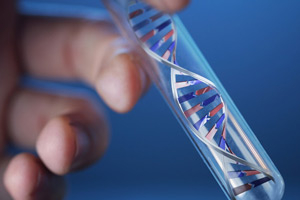
Ultraviolet radiation accelerates BRAF-driven melanomagenesis by targeting TP53
Jun 03, 2014 by Reddot Biotech Inc.Cutaneous melanoma is epidemiologically linked to ultraviolet radiation (UVR), but the molecular mechanisms by which UVR drives melanomagenesis remain unclear1, 2. The most common somatic mutation in melanoma is a V600E substitution in BRAF, which is an early event3. To investigate how UVR accelerates oncogenic BRAF-driven melanomagenesis, we used a BRAF(V600E) mouse model. In mice expressing BRAF(V600E) in their melanocytes, a single dose of UVR that mimicked mild sunburn in humans induced clonal expansion of the melanocytes, and repeated doses of UVR increased melanoma burden. Here we show that sunscreen (UVA superior, UVB sun protection factor (SPF) 50) delayed the onset of UVR-driven melanoma, but only provided partial protection. The UVR-exposed tumours showed increased numbers of single nucleotide variants and we observed mutations (H39Y, S124F, R245C, R270C, C272G) in the Trp53 tumour suppressor in approximately 40% of cases. TP53 is an accepted UVR target in human non-melanoma skin cancer, but is not thought to have a major role in melanoma4. However, we show that, in mice, mutant Trp53 accelerated BRAF(V600E)-driven melanomagenesis, and that TP53 mutations are linked to evidence of UVR-induced DNA damage in human melanoma. Thus, we provide mechanistic insight into epidemiological data linking UVR to acquired naevi in humans5. Furthermore, we identify TP53/Trp53 as a UVR-target gene that cooperates with BRAF(V600E) to induce melanoma, providing molecular insight into how UVR accelerates melanomagenesis. Our study validates public health campaigns that promote sunscreen protection for individuals at risk of melanoma.